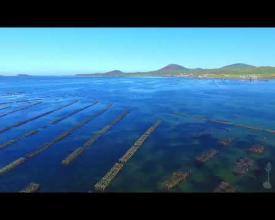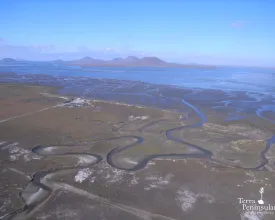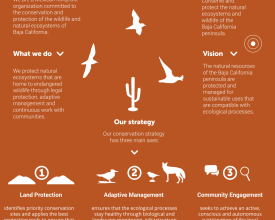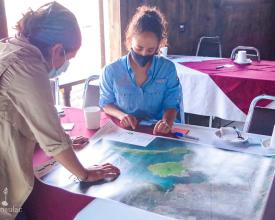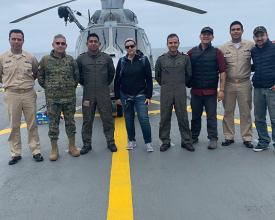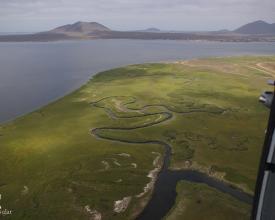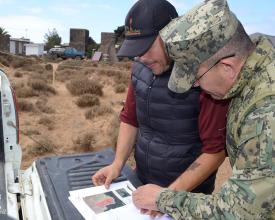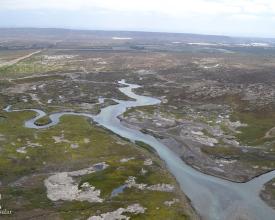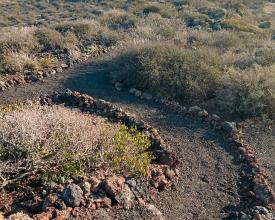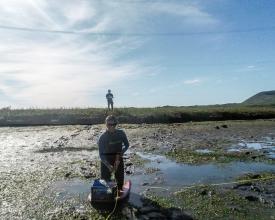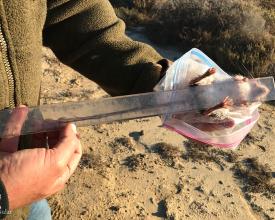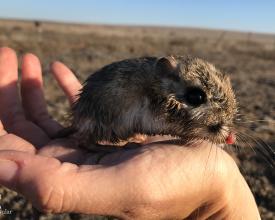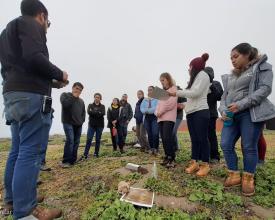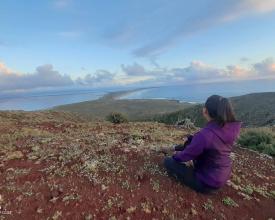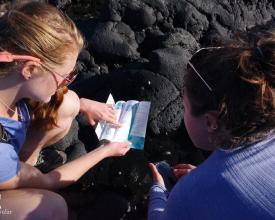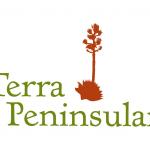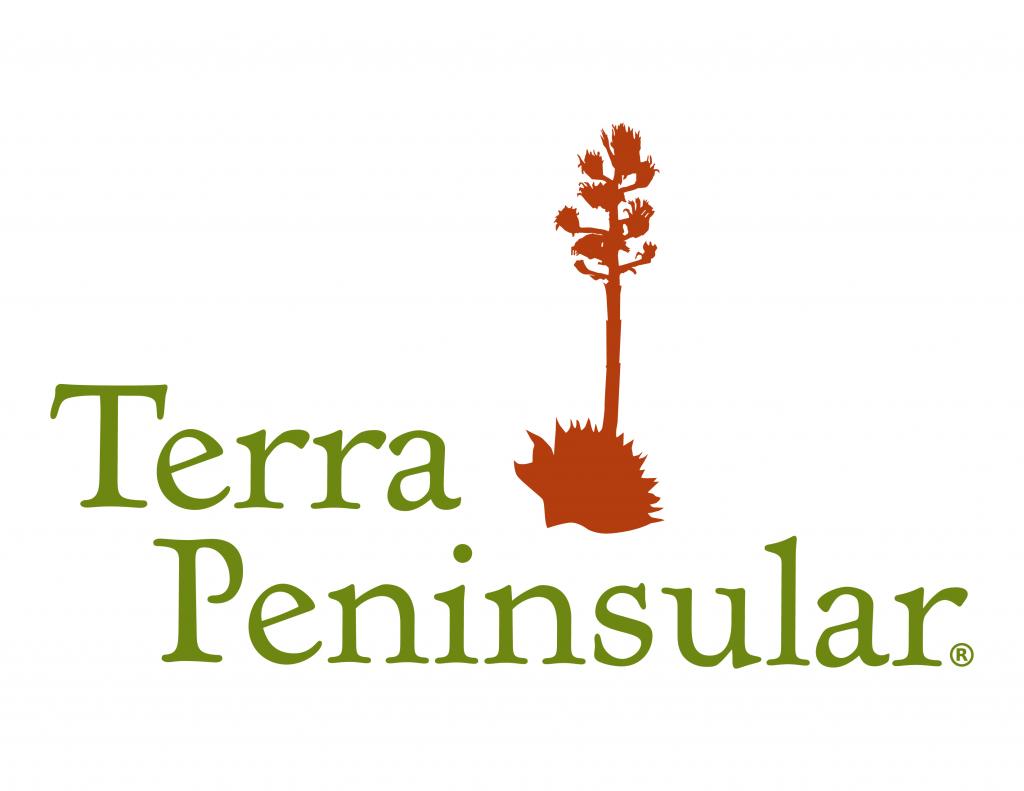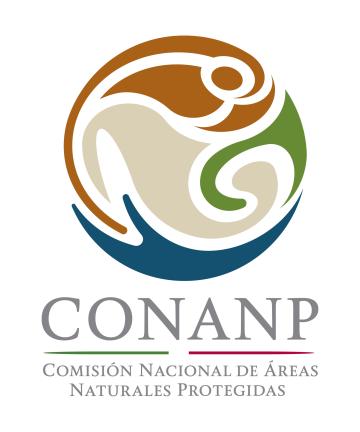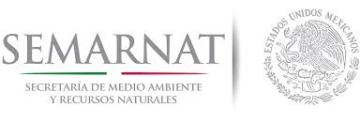“Reserva Natural de San Quintín para Todos”
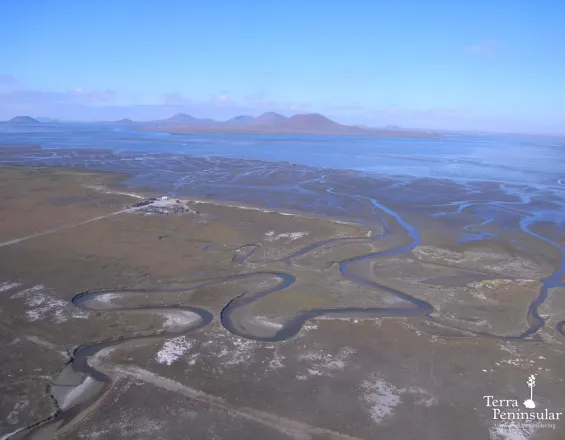
San Quintin Bay is one of the best-preserved coastal bays on the entire Pacific Coast of America. Since 2001, the civil association Terra Peninsular has focused its efforts on guaranteeing that the ecological value of this bay is maintained for the benefit of current and future communities.
Our goal is to guarantee the long-term protection of natural areas through a strategy that includes legal protection, adaptive habitat management, and continuous work with communities:
- We identify natural areas of great importance and apply the most appropriate management models to ensure their long-term protection.
- We carry out conservation actions in the protected areas: biological monitoring, surveillance programs, visitor services, infrastructure maintenance, and restoration.
- We promote the active participation of society through awareness-raising activities, events, festivals, and environmental education.
Context
Challenges addressed
Our awareness and social participation strategy emphasize the importance of the human dimension to achieve long-term success in nature conservation. Its objective is achieved through advocacy, dialogue of knowledge, community participation, and self-management. It also functions as a bridge to reach agreements between the conservation vision and the social vision to show that both are compatible. A fundamental part of the implementation of the strategy is education, the creation of relevant and valuable content, and the application of methodological tools that allow us to know and understand the opinions and perceptions of the communities that interact with the natural spaces.
We created the SQ Bird Festival as an opportunity to connect communities with their natural environment, an approach to the conservation work being done in the bay, and a space to promote bird watching as an activity with low environmental impact, which arouses curiosity and contributes to the knowledge of the communities.
Location
Process
Summary of the process
Terra Peninsular's conservation projects will always work in a cross-cutting practice between programs and never independently of them, seeking a logical sequence that connects one program with another, thus maximizing the Organization's conservation successes. Some examples of how the three actions have been successfully carried out were when we rediscovered a species that was thought to be extinct for more than 30 years, the San Quintín kangaroo rat (Dipodomys gravipes). We achieved this together with the SD Natural History Museum. Another example is the "La playa es de todos" campaign, which aims to protect the snowy plover bird in its breeding season. To date, it has managed to preserve four breeding seasons of the snowy plover. For this, key allies joined, including Pacifica at Ensenada, to represent the real estate industry. As part of the campaign, environmental education events, beach cleanups, and the creation of outreach materials have been implemented and the involvement of volunteers and students. We have valued the achievements of implementing management actions and awareness actions, which takes us to the next level to apply the legal protection action in ensuring the conservation of the snowy plover in this area.
Building Blocks
Habitat Protection and Management
This solution combines several actions to make the application of efforts in conserving a site more efficient. Habitat protection and management are framed in the territorial analysis of priority sites and the application of conservation instruments suitable for conservation and sustainability.
Through different instruments, site protection creates a legal basis for the adaptive management of the most critical areas for their biological value. Some of these instruments may be conservation agreements, land purchase, federal coastal zone concessions for protection in their own right, or collaboration to create Ramsar sites, sites of the WHSRN, Natural Protected Areas in different categories, Destination Agreements, among others. Collaboration is a guiding principle for this strategy, which is why we have a very close link with the authorities of the state of Baja California, with the municipal and local authorities in the ejidos and communities, as well as a strong collaboration link with the environmental sectors at all levels, such as SEMARNAT, CONANP, PROFEPA, and the General Directorate of Federal Maritime-Terrestrial Zone, among others. These collaborations have translated into thousands of hectares protected in Baja California, mainly in essential areas such as San Quintín.
Enabling factors
We must protect the unique natural habitats present in habitats present in the Baja California peninsula and maintain natural beauty with the assurance of landscape and ecological integrity. All biodiversity conservation and protection efforts have a sound scientific basis; this guarantees credibility in our work and ensures that we are on the fundamental priority habitats. We believe it is appropriate to make the best use of resources available by working closely with other organizations that share common values and interests.
Lesson learned
Something that makes us very proud is that the team that has remained at the forefront has achieved so many achievements, and we are still here. The fact that we are recognized nationally and internationally in land conservation. The work we do in Mexico can inspire Mexicans to conserve more, to encourage people who are just learning about protection and the value of nature, to develop a much stronger relationship with nature and through that relationship to take action to conserve land, whether it is through donations, talking with their families, or through the conservation of land. Through that relationship, take action to preserve land, whether through donations, talking to their friends, or creating new conservation projects.
Resources
Habitat Adaptive Management
This approach seeks to keep protected natural areas healthy, achieved through biological monitoring activities and implementing surveillance programs, attention to visitors in natural reserves, maintenance of infrastructure, and restoration actions. Adaptive management is built step by step, considering sustainable development and the uses of local communities and scientific knowledge. That is why management actions are closely coordinated with the national and international academic sector, seeking to ensure that the establishment of protected areas responds to global conservation needs. What happens in the protected areas is the basis for long-term conservation actions.
Enabling factors
Since 2018 we have been working on the restoration of the dunes of the Punta Mazo Nature Reserve. The restoration sites have been a success: the vegetation reclaimed its space, and today these trails are almost entirely covered with native vegetation. In 2017 we created the conservation program, which aims to implement long-term biological monitoring in the rocky intertidal and wetlands of the San Quintín lagoon complex. Both ecosystems are vulnerable to the impacts caused by human activity, so it is essential to generate tools to help conserve them.
Lesson learned
The Public Use Program seeks to identify the opportunities and concerns of each of the stakeholders through participatory workshops with the various actors in the area and a literature search on all scientific work done in the region. This will make it possible to establish a range of opportunities or experiences that will make it possible to regulate the activities carried out in the area. The goal is to find management strategies that maximize the diverse interests of users and the interests of habitat conservation, thus mitigating the human impact, climate change and improving the site's resilience.
Awareness and Social Participation
This solution emphasizes the importance of the human dimension to achieve long-term success in nature conservation. Its objective is achieved through promotion, dialogue of knowledge, community participation, and self-management. It also functions as a bridge to reach agreements between the conservation vision and the social vision to show that both are compatible. A fundamental part of the implementation of the strategy is education, the creation of relevant and valuable content, and the application of methodological tools that allow us to know and understand the opinions and perceptions of the communities that interact with natural areas.
Enabling factors
It is essential to implement creative tools that allow us to innovate the message and translate fieldwork and legal terms into symbols, identity, and cultural appropriation. Nature reserves are the ideal classroom for students and academics. The Adaptive Habitat Management and Awareness and Social Participation strategies work hand in hand to provide educational and outreach experiences. Through walks in the nature reserves, we show the conservation actions carried out in the different projects of the organization and the environmental value and biodiversity.
Lesson learned
Environmental Ethics: Since 2018, we are community members of the Leave No Trace Center for Outdoor Ethics that protects the outdoors by teaching and inspiring people to enjoy it responsibly through the learning of the 7 Leave No Trace Principles. In two years, we have graduated two generations of Leave No Trace Trainers at the Punta Mazo Nature Reserve in partnership with the National Outdoor Leadership School.
We are committed to supporting and promoting Leave No Trace's skills and ethics to keep water quality, healthy natural areas, thriving wildlife, and sustainable trails in our protected areas.
Coastal cleanup - We have been a member of the Waterkeeper alliance since 2016, and through the Waterkeeper Bahía San Quintín program, we seek to protect water quality in the bay. We also participate in the International Coastal Cleanup. Every year in September, we commit to clean beaches in collaboration with civil society organizations, businesses, government agencies, educational centers, and the community in general.
Impacts
- In collaboration with research centers and other civil society organizations, we canceled the Cabo San Quintin mega tourism project, threatening the bay's natural system.
- 5 concessions were obtained for conservation purposes in San Quintín (SQ), 32 ha of wetlands and coastal areas.
- 6 native plant species of Baja California were included in the list of threatened or endangered species in the Mexican Official Standard.
- Creation of the Punta Mazo nature reserve in SQ through the acquisition of 832 ha.
- The coalition for the protection of San Quintín Bay (SQB) is made.
- SQB becomes part of the Wetlands of International Importance list in the Ramsar Convention and is designated as a WHSRN
- Punta Mazo Nature Reserve was certified as an Area Voluntarily Destinated for Conservation (AVDC).
- The Monte Ceniza nature reserve was certified as AVDC. Obtained 14 Destination Agreements figuring over 1500 ha of wetlands and coastal areas in SQ.
- Through collaboration with the SDNHM, we rediscovered the SQ kangaroo rat. A rodent thought to be extinct for over 30 years.
- We received the Partners in flight award to recognize the community design of the Bird Festival and bird conservation projects.
- We participated in the San Quintín Nature Reserve certification.
Beneficiaries
Families, children, schools, local authorities, local artists, the scientific community, and the general public
Sustainable Development Goals
Story
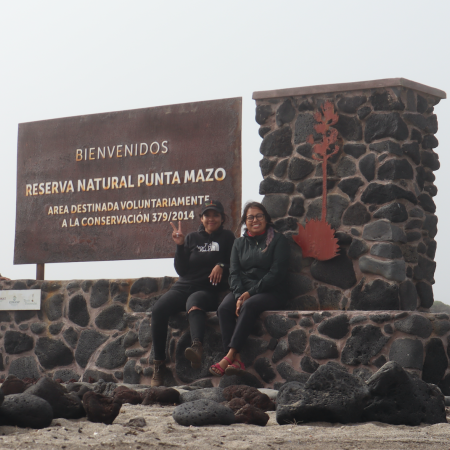
When I arrived in Ensenada, the port inhabitants spoke to me of San Quintín as a lonely and sad town, something like Juan Rulfo's Comala, a place ruled by wind and ghosts. I had to see it with my own eyes to discover that those images could not be further from reality. Once you venture out into the bay, everything is transformed. A few meters from the Transpeninsular, the twelve volcanic cones and the sea mist embrace you tightly and welcome you to a wild and misunderstood paradise. It wasn't until 2020, the year of the global pandemic, that for the first time, I was able to live for a week in the Punta Mazo Nature Reserve and was the happiest woman on earth. Our mission was to be park rangers to understand the issues facing San Quintin. Each sunrise and sunset was unique; the texture of the blind and its colors would never be the same again. As we walked the sandbar and did clean-ups, we observed the perfect flight of the snowy plover and least tern. We learned that the scrub and dunes were not simple mounds of sand or grass but a complex and delicate home. Here inhabit plants that can only be found in this region: the everlasting evergreen, poetically and vitally named; my beloved sand verbena, a succulent with wet flowers that like to live in the dunes, in extreme conditions low water and high salinity. I was in the home of the Baja California Whiptail, a lizard with vibrant colors and design on the level with or even above Paris couture. The shells, as "windows to the past," remained in place as proof of the passage of hunter-fishermen who lived in these lands hundreds of years ago; the ornamental objects they made with abalone shells showed us that we have always found beauty in what surrounds us throughout the history of humanity. The Punta Mazo Nature Reserve was certified as a Conservation Area and covers 830 hectares of pure magic. Therefore, my heart breaks when I think of all the garbage we collected and reappeared the next day in the same place as if we had not cleaned anything. We only need to open our eyes a little to understand that the natural world is also our home and responsibility. We must treasure it and take care of it with gentleness because it is highly delicate to ensure its balance. I felt very fortunate to immerse myself in nature during that week, even though we were in the middle of a pandemic. There we felt safe and free. We need to spend a little time contemplating the miracle that is this planet.

